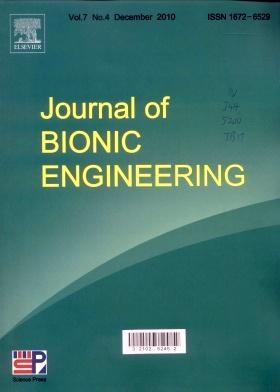Study on Microscopic Interfacial Mechanical Properties of the Gecko's Foot Adhesion Mechanism
Abstract
The gecko's feet possess unique microstructures that enable strong adhesive forces when interacting with various surfaces. Understanding the interfacial forces generated by these microstructures is crucial for deciphering their adhesion mechanism. This study developed a contact mechanics model based on van der Waals forces and frictional self-locking effects, incorporating both the spatular pad and spatular shaft of the gecko’s foot microstructures. Building on this foundation, a discrete element simulation model was established using the bonding method to replicate the contact between the gecko's spatula and different surfaces. The dynamic adhesion and detaching processes under normal and tangential external forces were simulated, allowing for the analysis of variation curves of normal and tangential adhesion forces at different detaching angles. This provided insights into the directional adhesion mechanics of the gecko's spatula. Furthermore, a force measurement system was constructed using a multi-degree-of-freedom nano-manipulator and an atomic force microscope within a scanning electron microscope. This system was used to experimentally test the adhesion characteristics of the gecko’s foot microstructures, validating the accuracy of the proposed adhesion mechanics model.

 求助内容:
求助内容: 应助结果提醒方式:
应助结果提醒方式:


